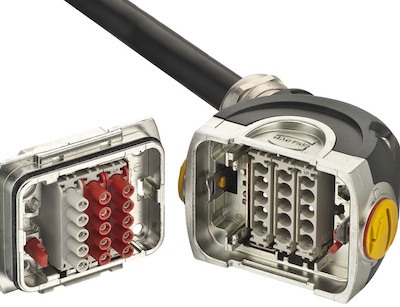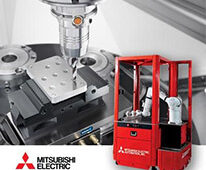According to Harting, you would like to see the following features on connectors:
–a simple locking mechanism that you can engage with a screw driver
–a configurable design that lets you determine the potentials
–a design that makes pulling cable through easier
–a shape that enables your hand to reach through tight spaces and still grab the connector
Harting engineers have taken your wishes and developed a new connector product line: the Han-Yellock® connector. This square-shaped connector consists of easy to assemble parts, which, in addition to enabling you to configure connectors to your needs, reduces inventory and wiring.

When assembling, the modules require only male crimp contacts. The Protective Earth (PE) contact is part of the hood housing and can be connected with crimp or Quick Lock contacts.
The locking function on the hood makes connections and disconnections safe, simple, and quick. With the internal locking mechanism, the locking takes place as the cable and device sides join together. A red ring around the perimeter of the push button is visible if the housing halves do not snap together properly. You can use a screwdriver to rotate the locking mechanism 90° to engage the lock.
The module design enables a new approach and strategy for electrical planning and procurement. You can customize the connector for your needs, as long as you stay within a 20 A per contact limit. For assembly, only male contacts are needed. The conduct between the two male contacts is made by multipliers, which allows a 1:1 wire to wire arrangement and the use of bridges. Two to five contacts can be arranged. The bridge attachment can be inserted on either the cable or housing side of the connector. To rewire, simply change the bridge.
In the past, terminals blocks have been responsible for the function of multiplying potentials. But now this function has been integrated into the connector for quick, compact and easy to service solution.
HARTING
www.harting.com
::Design World::
Filed Under: Factory automation, FASTENING • JOINING • locks • latches • pins, Connectors (electrical) • crimp technologies





Tell Us What You Think!